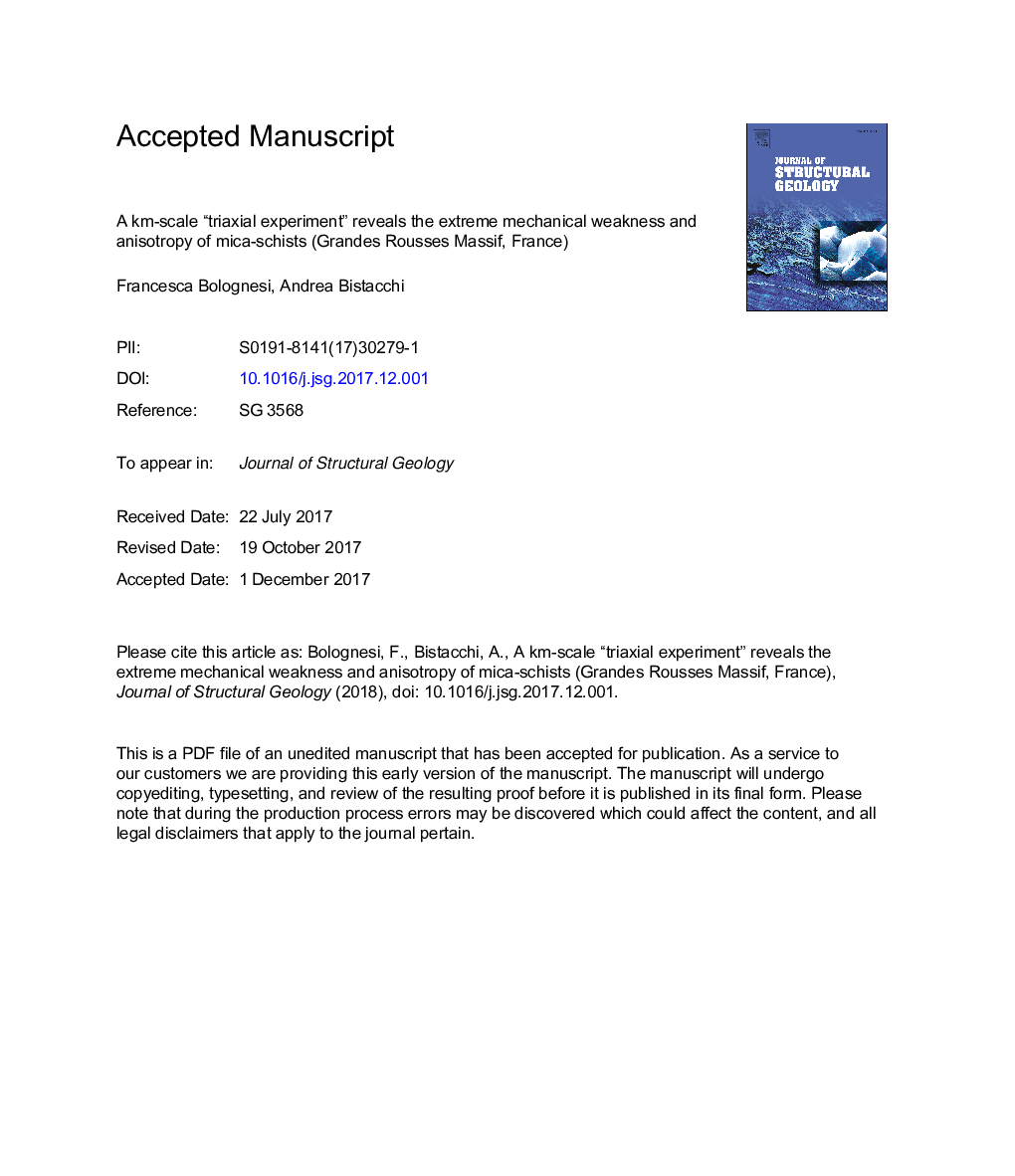| Article ID | Journal | Published Year | Pages | File Type |
|---|---|---|---|---|
| 8914513 | Journal of Structural Geology | 2018 | 26 Pages |
Abstract
The development of Andersonian faults is predicted, according to theory and experiments, for brittle/frictional deformation occurring in a homogeneous medium. In contrast, in an anisotropic medium it is possible to observe fault nucleation and propagation that is non-Andersonian in geometry and kinematics. Here, we consider post-metamorphic brittle/frictional deformation in the mechanically anisotropic mylonitic mica-schists of the Grandes Rousse Massif (France). The role of the mylonitic foliation (and of any other source of mechanical anisotropy) in brittle/frictional deformation is a function of orientation and friction angle. According to the relative orientation of principal stress axes and foliation, a foliation characterized by a certain coefficient of friction will be utilized or not for the nucleation and propagation of brittle/frictional fractures and faults. If the foliation is not utilized, the rock behaves as if it was isotropic, and Andersonian geometry and kinematics can be observed. If the foliation is utilized, the deviatoric stress magnitude is buffered and Andersonian faults/fractures cannot develop. In a narrow transition regime, both Andersonian and non-Andersonian structures can be observed. We apply stress inversion and slip tendency analysis to determine the critical angle for failure of the metamorphic foliation of the Grandes Rousses schists, defined as the limit angle between the foliation and principal stress axes for which the foliation was brittlely reactivated. This approach allows defining the ratio of the coefficient of internal friction for failure along the mylonitic foliation to the isotropic coefficient of friction. Thus, the study area can be seen as a km-scale triaxial experiment that allows measuring the degree of mechanical anisotropy of the mylonitic mica-schists. In this way, we infer a coefficient of friction μweak=0.14 for brittle-frictional failure of the foliation, or 20% of the isotropic coefficient of internal friction.
Related Topics
Physical Sciences and Engineering
Earth and Planetary Sciences
Geology
Authors
Francesca Bolognesi, Andrea Bistacchi,
